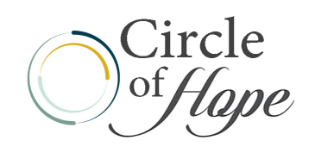Alcoholics Anonymous is a program designed to help individuals recover from alcohol use disorder. It’s a non-professional gathering of individuals who have all had issues with alcohol addiction. These individuals span a multitude of races, classes, professions, and locations. Alcoholics Anonymous (abbreviated AA) is a program that has seen a lot of success, so much so that it has been duplicated to work with narcotics as well. AA is one of the most effective ways of long-term support for recovering alcoholics. Peer support has been proven to help individuals leave their substance use disorder behind. That peer support is the pillar of AA’s foundation.
Ventura County has its share of individuals who are recovering from alcohol use disorder. The concentration of people in the region makes it desirable to have an AA location in the area. However, many people who want to leave their addiction behind are concerned about what AA can offer them and if it’s worth investing their time into the process. Others are worried that they will lose part of themselves and their personality. AA celebrated individuality, and the peer support that many receive comes from others who have gone through the same struggles as they did. In this article, we’ll explore AA in Ventura county and look at what someone can expect before entering the program.
What is Alcoholics Anonymous?
AA comes from two people’s idea to leave their alcohol dependence behind. In 1939, Bill W. and Dr. Bob S. came together to form the first-ever Alcoholics Anonymous movement. Both men had previously been involved in a spiritually-based sobriety fellowship that they decided to change a bit to suit their needs. Early in 1939, the men collaborated on a textbook that is still used today in AA meetings. The book contained a record of a few people who had successfully recovered thanks to the program. From the point that the book was published, membership soared as people flocked to AA meetings and started setting up their own chapters in places where they would bring the most benefit.
Today’s AA is a little different from its humble roots. The book has been updated and revamped, but it still keeps the same core message towards those who want to quit their alcohol use disorder. Alcoholics Anonymous is an organization that focuses on individuals who have realized they have a problem and wish to seek the help they need. The organization is non-professional, meaning that individuals who form the core of meetings are there as non-specialists. These meetings can either be open or closed and have a series of different formats that change depending on the meeting type held. Some people might feel a bit daunted by attending their first meeting, but it’s much easier to deal with it when you see what a meeting consists of.
What To Expect at An AA Meeting

AA meetings all follow a similar structure, regardless of if it’s an open or closed meeting. You’re likely to find yourself in an average-sized room with a set of chairs arranged in a circle, although some meetings occur in open-air areas, like parks. A facilitator runs the meeting, known as the “chair” of the meeting. The chair usually opens the meeting by welcoming everyone but is also there to maintain the meeting structure. He usually invites attendees to go over the twelve steps of AA before they visit, but if they don’t, it’s not a big deal. Most facilitators can help new visitors find their feet.
During the meeting, several people will deliver their personal stories and struggles with alcohol use disorder. These are usually very personal stories that show how they got to that point. You are likely to encounter a lot of hugs and receive phone numbers from others in the group as a source of support. There is usually a lot of dark humor in AA meetings, but it’s bad form to laugh since most of those encounters are things only recovering alcoholics would identify with. Don’t be worried if laughing turns to crying within a matter of minutes. Sharing these personal stories is a matter of deep intimacy, and sometimes it leads to emotional outbursts like these.
Who Can Attend AA?
AA isn’t limited to any race, class, or religion. The founders of the movement wanted the process to be accessible to all people. However, the different types of meetings vary in their composition. An open meeting is open for all and usually has more fun and welcoming atmosphere. Open meetings usually make no secret of their meeting locations. There’s usually a notice board at the meeting location that outlines the time when the open meeting will be held. Members usually invite others they see struggling with their substance use disorder and help them to recover. Non-alcoholics are also invited to attend open meetings as observers.
Closed meetings are a more intimate affair, with AA members invited to attend. These gatherings are usually a lot smaller but are a better first meeting for newcomers or prospective members who want to join. The meetings are designed to help a person understand that they’re not in this struggle by themselves and that there are friends who will help them. These meetings also allow for a more honest exchange about alcohol addiction stories and allow others to share their personal experiences themselves. While anyone can attend AA meetings, the type of meeting you choose to go to might make it easier to continue with the program.
Cost Of AA
Alcoholics Anonymous is a non-profit organization and doesn’t charge its members dues. However, there is usually a collection box set up at a meeting to help fund necessities for the group. Attendees are welcome to donate if they see fit to the growth and development of the local group. The donations usually go towards covering rent, printing costs for pamphlets or coffee. If an AA meeting asks you to pay for the privilege of attending, that’s a sign that you’re not going to an actual AA meeting. Most regions also get support from state and federal funding if they apply for it.
Structure Of Alcoholics Anonymous

Alcoholics anonymous is structured in a unique way. While most organizations see their structure with rules handed down from aboard, the board in AA is at the bottom of the structural table. Instead, the individual groups of AA have their own meeting guidelines. Even the manual states that AA groups should govern their own meetings and be guided by nothing aside from their conscience. However, as an organization, it still needs some form of structure to ensure that individual groups are aware of what others are doing and pattern themselves after other areas whose methods show tangible results.
The AA groups are governed by group service representatives who are elected to oversee a series of groups. The groups also elect a district service representative to present their concerns and queries to the board. The district representatives make up the members of the area board, who elect individuals to go to the general service conference. The conference liaises directly with the general service board to ensure that everything follows the rules and guidelines outlined in the handbook. While the term governance is used, these representatives are more along the lines of volunteers who carry concerns from the group members to the board, which can help make change happen at the upper echelons of society.
Examples Of 12 Steps Of AA
The twelve-step program of AA is outlined as follows:
- We admitted we were powerless over alcohol—that our lives had become unmanageable – An individual at this stage has accepted that their behavior has caused severe problems in their life and realizes they need to change.
- Came to believe that a Power greater than ourselves could restore us to sanity – Belief in a higher power, while not necessary, can help with anchoring a person’s recovery. Individuals who are not religious sometimes choose themselves as their higher power.
- Decided to turn our will and our lives over to the care of that Higher Power as we understood Him – Giving up oneself to that higher power is a significant decision for many, and crossing this bridge usually helps a person be more accountable for their actions.
- Made a searching and fearless moral inventory of ourselves – Part of overcoming addiction is facing the truths about a person’s thoughts and intentions. This step helps an individual come to terms with both of these in their own time.
- Admitted to the Higher Power, to ourselves, and to another human being the exact nature of our wrongs – Confession can be cathartic, and admitting how things have been and what a person has gone through can help them to overcome that guilt and self-doubt that plague them.
- Were entirely ready to have the Higher Power remove all these character defects – Getting over these mental hurdles is a task in itself, but not an impossible one.
- Humbly asked Him to remove our shortcomings – Allowing a higher power to take responsibility for relieving guilt can help a person deal with the feelings of inadequacy that come with that guilt.
- Made a list of all persons we had harmed and became willing to make amends to them all – Making amends is a significant part of recovery. Sometimes, people will travel for miles, even to other countries, to make those amends to people they think they have wronged.
- Made direct amends to such people wherever possible, except when to do so would injure them or others – Direct amends could be something as simple as letting someone know they’re still alive. Big gestures are not necessary at this stage, but a simple approach to making direct amends is what most people t this stage go for.
- Continued to take personal inventory and when we were wrong promptly admitted it – Continuous acceptance that a person is not perfect is an integral part of the process.
- Sought through prayer and meditation to improve our conscious contact with that Higher Power as we understood Him, praying only for knowledge of His will for us and the power to carry that out – Many times, dealing with alcohol use disorder is a dark and lonely road. It helps to have a higher power to fall back on when necessary.
- Having had a spiritual awakening as the result of these steps, we tried to carry this message to alcoholics and to practice these principles in all our affairs – At this stage, a person is ready to help others and might even find their own AA group to spread the message and aid others to get out of their dependency.
Choosing Ventura County for Sobriety
Ventura County has a vibrant community, and community is one of the essential parts of AA meetings. Because of the vibrant community in the area, Ventura County is perfect for someone who wants to recover but doesn’t want to do so in their own town or city. AA in Ventura County covers several different locations and allows for both open and closed meetings. If you’re looking for a good group for AA in Ventura County, you can ask around or visit some of the local meeting locations, such as churches or rec rooms. You could also use Google to help locate an AA in Ventura County that’s close to your area, so you don’t have to travel too far to get there.
At its heart, AA is about helping people, and having others join the community helps to keep it vibrant and growing. Don’t be afraid to ask questions and learn more about the procedure before committing to it.
Long Term Sobriety in Ventura County
The goal of all AA groups in Ventura County is to guarantee long-term sobriety. Recovering from alcohol use disorder is a tricky thing but not an impossible task. Admitting that a person has a problem is the first step towards recovery, but having the right support network can guarantee success. Circle of Hope can help you connect with AA in Ventura County so that you can find the network you need to overcome your substance use disorder. Contact us today to find out more about the services we offer and how they can help you.

